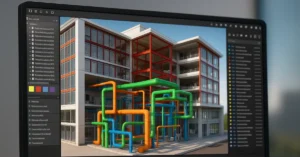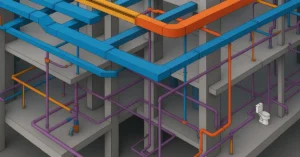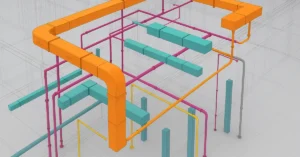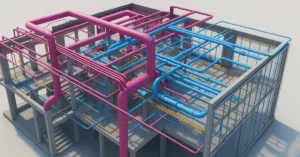Explore the striking brutalist buildings in Jerusalem
Jerusalem, a city layered with centuries of spiritual, political, and cultural history, also boasts an unexpected yet fascinating architectural chapter: Brutalism. Known for its monumental concrete forms and unapologetic rawness, brutalist architecture in Jerusalem tells a story of a city in transition during the mid-20th century, blending modernist ideals with local tradition and historical context.
This blog delves into the brutalist buildings in Jerusalem, uncovering their origins, significance, and the unique way they have carved a niche within this ancient city’s landscape. We explore key buildings, the socio-political context that gave rise to them, and the ongoing conversation about their preservation and role in Jerusalem’s architectural future.
Understanding Brutalism in the Context of Jerusalem
Brutalism, emerging globally from the 1950s to the 1970s, is defined by the use of raw concrete (“béton brut”) and monumental, fortress-like aesthetics. It arose from a desire to express honesty in materials and function, often reflecting social ideals and rapid urban growth.
In Jerusalem, brutalism took on a distinct character. The city’s post-1948 expansion, political complexity, and cultural mosaic influenced architects to experiment with brutalist forms that would both respect the city’s heritage and embody modern aspirations. Unlike other brutalist strongholds in Europe or the US, Jerusalem’s brutalism often includes local stone, textured concrete, and designs responding to the city’s climate and topography.
Top Brutalist Buildings in Jerusalem
1. The Israel Museum
Located in the Givat Ram neighborhood, the Israel Museum, completed in 1965 by architect Alfred Mansfeld, is a pioneering example of brutalist architecture in Jerusalem. Its heavy use of exposed concrete is softened by integration with Jerusalem stone, linking the building visually to the city’s historic fabric. The museum’s design emphasizes functional clarity and monumental scale, housing some of the world’s most important archaeological and cultural artifacts.
2. The Knesset (Israeli Parliament)
Completed in 1966, the Knesset is a symbol of Israeli democracy and national identity. Although not purely brutalist, its design by architect Joseph Klarwein incorporates brutalist elements, notably the use of raw concrete and large geometric forms. The building strikes a balance between solemnity and openness, surrounded by gardens and symbolic sculptures, making it a significant brutalist landmark.
3. Hebrew University of Jerusalem – Givat Ram Campus
This campus features multiple buildings designed in the brutalist style during the 1960s and 1970s. The use of heavy concrete slabs, repetitive modular forms, and open plazas defines this academic environment. The brutalist aesthetic here serves practical needs for large-scale educational facilities while contributing to Jerusalem’s modern architectural identity.
4. The Holyland Tower (aka Holyland Park Tower)
Standing tall in the Rehavia neighborhood, the Holyland Tower is a prominent brutalist residential building from the 1970s. Its blocky, concrete construction contrasts with the traditional stone buildings of Jerusalem, embodying the tension between modernist aspirations and the city’s historic textures.
5. National Library of Israel
Opened recently but with roots in brutalist principles, the National Library’s earlier buildings and initial designs incorporated massive concrete elements and clear geometric forms, reflecting the brutalist commitment to material honesty and functionality. The library is an essential cultural institution bridging past and present.
6. Shaare Zedek Medical Center – Main Building
This hospital’s main building, constructed in the brutalist era, features the hallmark raw concrete surfaces and angular shapes. Designed for function and durability, it symbolizes Jerusalem’s post-war modernization in healthcare infrastructure.
7. The Center for Jewish Art
Housed within the Hebrew University campus, this building employs brutalist design language with strong concrete forms and a fortress-like presence. It holds significant collections and research centers dedicated to Jewish heritage.
8. Davidka Square Underground Parking
This utilitarian yet architecturally notable brutalist structure in central Jerusalem showcases the style’s emphasis on raw materials and unadorned functionality, integrating infrastructure with urban needs.
9. Mishkenot Sha’ananim Cultural Center
While the original Mishkenot Sha’ananim buildings date earlier, the cultural center additions from the mid-20th century adopt brutalist features, using concrete and stone to create robust, functional spaces for art and dialogue.
10. Givat Shaul Industrial Zone Buildings
Several industrial and commercial buildings in Givat Shaul demonstrate brutalist traits with their massive concrete forms, minimal ornamentation, and pragmatic design to meet growing economic demands in Jerusalem during the mid-century.
Why Brutalism Resonated in Jerusalem
The rise of brutalist architecture in Jerusalem is tightly linked to historical forces. After Israel’s founding in 1948, there was urgent need for rapid urban expansion, new government buildings, and modern public infrastructure. Brutalism offered a practical, cost-effective solution that could project strength and permanence.
Moreover, the style’s raw, honest use of materials resonated with a nation-building ethos—conveying resilience and forward-looking vision. At the same time, brutalism’s monumental character meshed well with Jerusalem’s ancient grandeur, enabling architects to create a modern identity rooted in timelessness.
Public Perception and Controversy
Brutalist buildings in Jerusalem have sparked mixed feelings over decades. Some locals and visitors appreciate their boldness, architectural clarity, and the way they stand apart from ornate historical styles. Others see them as cold, imposing, or out of place amid the city’s warm stone heritage.
Preservation debates are ongoing. As the city modernizes, some brutalist structures face demolition or radical alteration, while others are championed as important cultural assets. Enthusiasts argue for education and adaptive reuse, highlighting brutalism’s artistic and historical value.
Preservation Challenges in Jerusalem
Brutalist buildings often suffer from neglect due to their aging concrete and changing aesthetic preferences. Jerusalem’s climate—hot summers and wet winters—accelerates concrete degradation. Combined with limited restoration funding and political sensitivities, preserving brutalist heritage is complex.
Architectural conservationists advocate for balancing modernization with respect for original designs. Solutions include careful restoration of concrete, sensitively updating interiors for new functions, and incorporating these structures into broader urban renewal projects.
Brutalist Architecture as a Reflection of Jerusalem’s Complex Identity
Jerusalem’s brutalism uniquely expresses the city’s multifaceted identity. It marries modernist ideals with local tradition and the region’s geopolitics. These buildings symbolize resilience amid conflict, cultural blending, and the tensions between old and new.
Far from mere concrete blocks, Jerusalem’s brutalist architecture invites reflection on the city’s history, politics, and aspirations—making it a rich subject for architectural study and tourism.
The Future of Brutalist Buildings in Jerusalem
Looking ahead, Jerusalem faces a critical choice: whether to erase brutalist traces or integrate them into the city’s evolving narrative. Adaptive reuse, combined with public engagement and innovative preservation techniques, offers a promising path.
Brutalist buildings can be transformed into cultural venues, educational centers, or residential spaces that respect heritage while serving contemporary needs. By embracing this approach, Jerusalem can preserve a vital part of its architectural tapestry for future generations.
Conclusion
Brutalist buildings in Jerusalem are bold architectural statements that challenge, inspire, and provoke. They are products of a unique historical moment—where modernity met tradition in a city sacred to many.
Whether admired or criticized, these buildings demand attention as enduring symbols of Jerusalem’s complex identity and evolving story. Preserving and understanding them enriches our appreciation of a city that is, like brutalism itself, unapologetically powerful and deeply textured.
Next time you explore Jerusalem’s streets, look beyond the ancient stones and discover the raw concrete giants that define a pivotal era in the city’s architectural journey.
If you’re interested in learning more about architecture firms in Europe, check out this comprehensive list of the top 50 firms compiled by Archgyan. From innovative startups to long-established industry leaders, this list has it all. Take a look and discover some of the most inspiring and influential architecture firms in Europe today.
If you’re interested in architecture and want to learn more about this amazing field, subscribe to our podcast on youtube
For more SketchUp tutorials, head to https://www.sketchupguru.com










